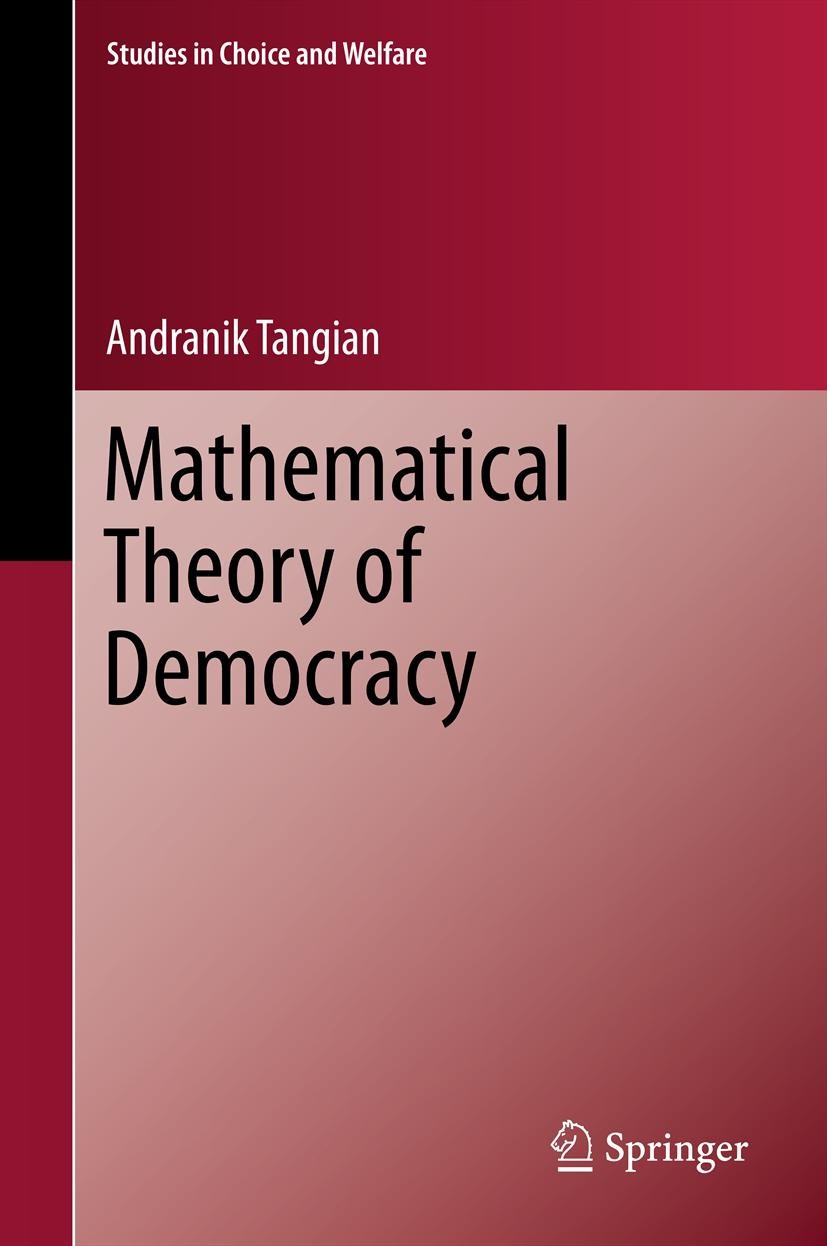| 書目名稱 | Mathematical Theory of Democracy |
| 編輯 | Andranik Tangian |
| 視頻video | http://file.papertrans.cn/627/626637/626637.mp4 |
| 概述 | Offers a historical outline with an alternative view at social choice, including a revision of the paradoxes of Condorcet and Arrow.Presents a computational instead of an axiomatic approach, implying |
| 叢書名稱 | Studies in Choice and Welfare |
| 圖書封面 |  |
| 描述 | .The mathematical theory of democracy deals with selection of representatives who make decisions on behalf of the whole society. In this book, the notion of representativeness is operationalized with the index of popularity (the average percentage of the population whose opinion is represented on a number of issues) and the index of universality (the frequency of cases when the opinion of a majority is represented). These indices are applied to evaluate and study the properties of single representatives (e.g. president) and representative bodies (e.g. parliament, magistrate, cabinet, jury, coalition). To bridge representative and direct democracy, an election method is proposed that is based not on voting but on indexing candidates with respect to the electorate’s political profile. In addition, societal and non-societal applications are considered.. |
| 出版日期 | Book 2014 |
| 關(guān)鍵詞 | Arrow‘s Paradox; Condorcet‘s Paradox; Representative Democracy; Representativeness; Social Choice |
| 版次 | 1 |
| doi | https://doi.org/10.1007/978-3-642-38724-1 |
| isbn_softcover | 978-3-642-43480-8 |
| isbn_ebook | 978-3-642-38724-1Series ISSN 1614-0311 Series E-ISSN 2197-8530 |
| issn_series | 1614-0311 |
| copyright | Springer-Verlag Berlin Heidelberg 2014 |
 |Archiver|手機(jī)版|小黑屋|
派博傳思國(guó)際
( 京公網(wǎng)安備110108008328)
GMT+8, 2025-10-22 00:50
|Archiver|手機(jī)版|小黑屋|
派博傳思國(guó)際
( 京公網(wǎng)安備110108008328)
GMT+8, 2025-10-22 00:50


